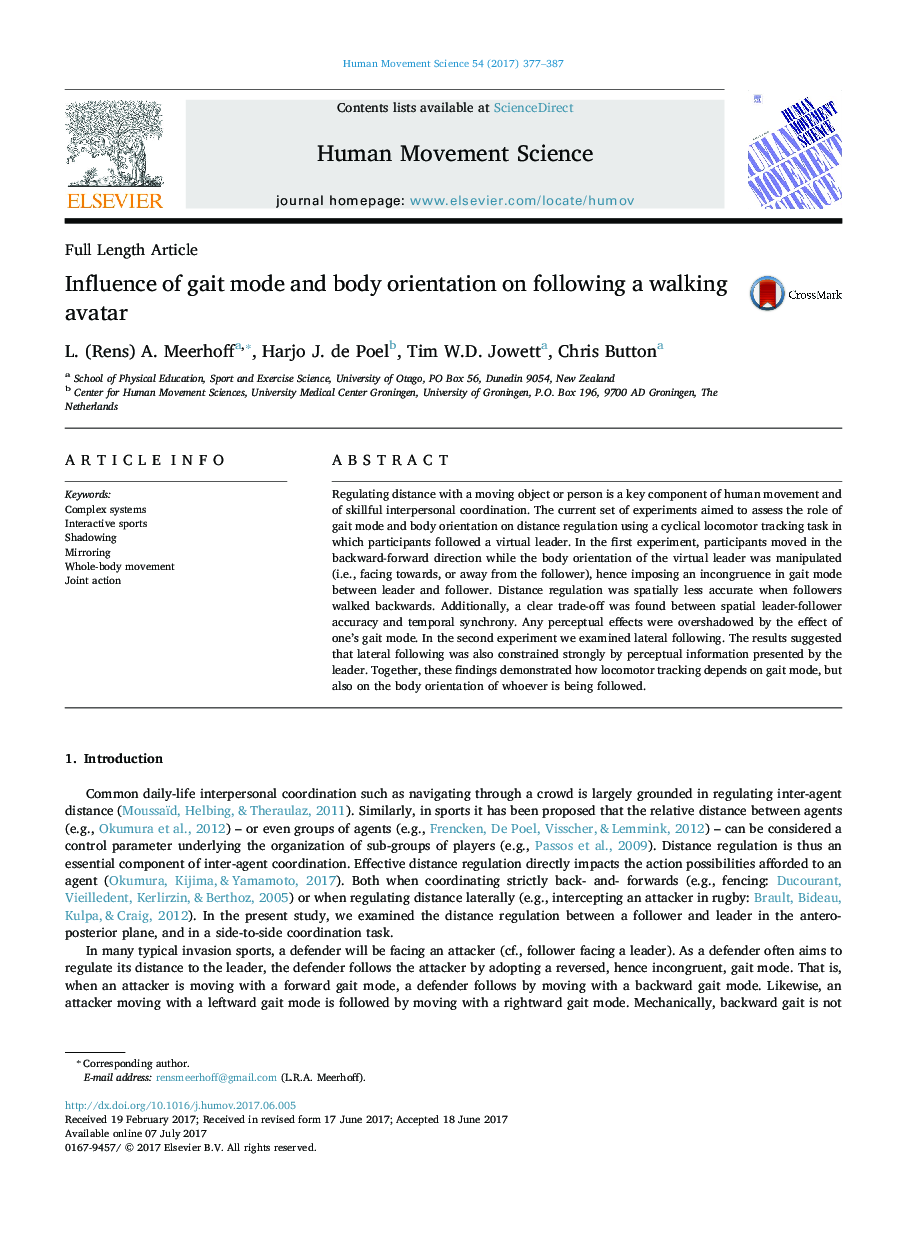| Article ID | Journal | Published Year | Pages | File Type |
|---|---|---|---|---|
| 5041997 | Human Movement Science | 2017 | 11 Pages |
â¢Distance regulation with a (virtual) leader is affected by one's own gait mode.â¢In back- and forwards gait, incongruent gait modes worsen distance regulation.â¢Perceptual effects of approaching objects are clouded by gait mode.â¢Movement direction does not affect distance regulation when shuffling laterally.â¢In lateral following, followers are sensitive to perceptual asymmetries.
Regulating distance with a moving object or person is a key component of human movement and of skillful interpersonal coordination. The current set of experiments aimed to assess the role of gait mode and body orientation on distance regulation using a cyclical locomotor tracking task in which participants followed a virtual leader. In the first experiment, participants moved in the backward-forward direction while the body orientation of the virtual leader was manipulated (i.e., facing towards, or away from the follower), hence imposing an incongruence in gait mode between leader and follower. Distance regulation was spatially less accurate when followers walked backwards. Additionally, a clear trade-off was found between spatial leader-follower accuracy and temporal synchrony. Any perceptual effects were overshadowed by the effect of one's gait mode. In the second experiment we examined lateral following. The results suggested that lateral following was also constrained strongly by perceptual information presented by the leader. Together, these findings demonstrated how locomotor tracking depends on gait mode, but also on the body orientation of whoever is being followed.
